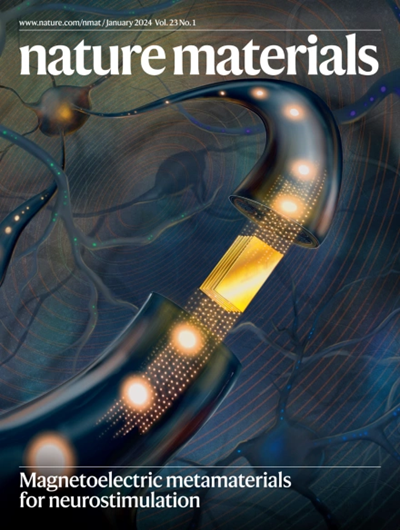Sub-2-nm-droplet-driven growth of amorphous metal chalcogenides approaching the single-layer limit
IF 38.5
1区 材料科学
Q1 CHEMISTRY, PHYSICAL
引用次数: 0
Abstract
Atom-thin amorphous materials (for example, amorphous monolayer carbon) offer a designable material platform for fundamental studies of the disorder system, as well as the development of various applications. However, their growth at a single layer remains challenging since their thermodynamically favourable grains are neither two dimensional nor layered. Here we demonstrate the growth of 1-nm-thick, amorphous metal chalcogenides at a wafer scale using a nanodroplet-driven nanoribbon-to-film strategy. Metal clusters are initially liquified into 1–2 nm droplets at 120 °C, and they then orchestrate the growth of amorphous single-layer nanoribbons, which eventually merge into a continuous centimetre-scale film. Phase-field simulations, combined with our characterizations, suggest a non-equilibrium kinetic growth mechanism, which can be applicable to various films, for example, PtSex, IrSex, PdSex and RhSex. The synthesized films exhibit a range of unique properties, including tunable conductivity through disorder modulation, high work functions and remarkable catalytic activity, making them promising candidates for hole-injection contacts in p-type transistors and hydrogen production applications. This work opens a pathway for the synthesis of non-layered materials approaching the single-layer limit. The synthesis of atom-thin amorphous films remains challenging as their thermodynamically favourable grains are neither two dimensional nor layered. Here a droplet-driven nanoribbon-to-film growth strategy is reported to achieve amorphous metal chalcogenides at the single-layer limit.


亚2纳米液滴驱动的非晶金属硫族化合物生长接近单层极限
原子薄非晶材料(例如,非晶单层碳)为无序系统的基础研究以及各种应用的发展提供了一个可设计的材料平台。然而,它们在单层中的生长仍然具有挑战性,因为它们的热力学有利的晶粒既不是二维的,也不是分层的。在这里,我们展示了使用纳米液滴驱动的纳米带到薄膜策略在晶圆尺度上生长1纳米厚的非晶金属硫族化合物。金属团簇最初在120°C下液化成1-2 nm的液滴,然后它们协调无定形单层纳米带的生长,最终融合成连续的厘米级薄膜。相场模拟与我们的表征相结合,表明了一种非平衡动力学生长机制,可以适用于各种薄膜,例如PtSex, IrSex, PdSex和RhSex。合成的薄膜表现出一系列独特的性能,包括通过无序调制可调谐的电导率,高功函数和显著的催化活性,使其成为p型晶体管和制氢应用中空穴注入触点的有希望的候选者。这项工作为接近单层极限的非层状材料的合成开辟了一条途径。
本文章由计算机程序翻译,如有差异,请以英文原文为准。
求助全文
约1分钟内获得全文
求助全文
来源期刊

Nature Materials
工程技术-材料科学:综合
CiteScore
62.20
自引率
0.70%
发文量
221
审稿时长
3.2 months
期刊介绍:
Nature Materials is a monthly multi-disciplinary journal aimed at bringing together cutting-edge research across the entire spectrum of materials science and engineering. It covers all applied and fundamental aspects of the synthesis/processing, structure/composition, properties, and performance of materials. The journal recognizes that materials research has an increasing impact on classical disciplines such as physics, chemistry, and biology.
Additionally, Nature Materials provides a forum for the development of a common identity among materials scientists and encourages interdisciplinary collaboration. It takes an integrated and balanced approach to all areas of materials research, fostering the exchange of ideas between scientists involved in different disciplines.
Nature Materials is an invaluable resource for scientists in academia and industry who are active in discovering and developing materials and materials-related concepts. It offers engaging and informative papers of exceptional significance and quality, with the aim of influencing the development of society in the future.
 求助内容:
求助内容: 应助结果提醒方式:
应助结果提醒方式:


